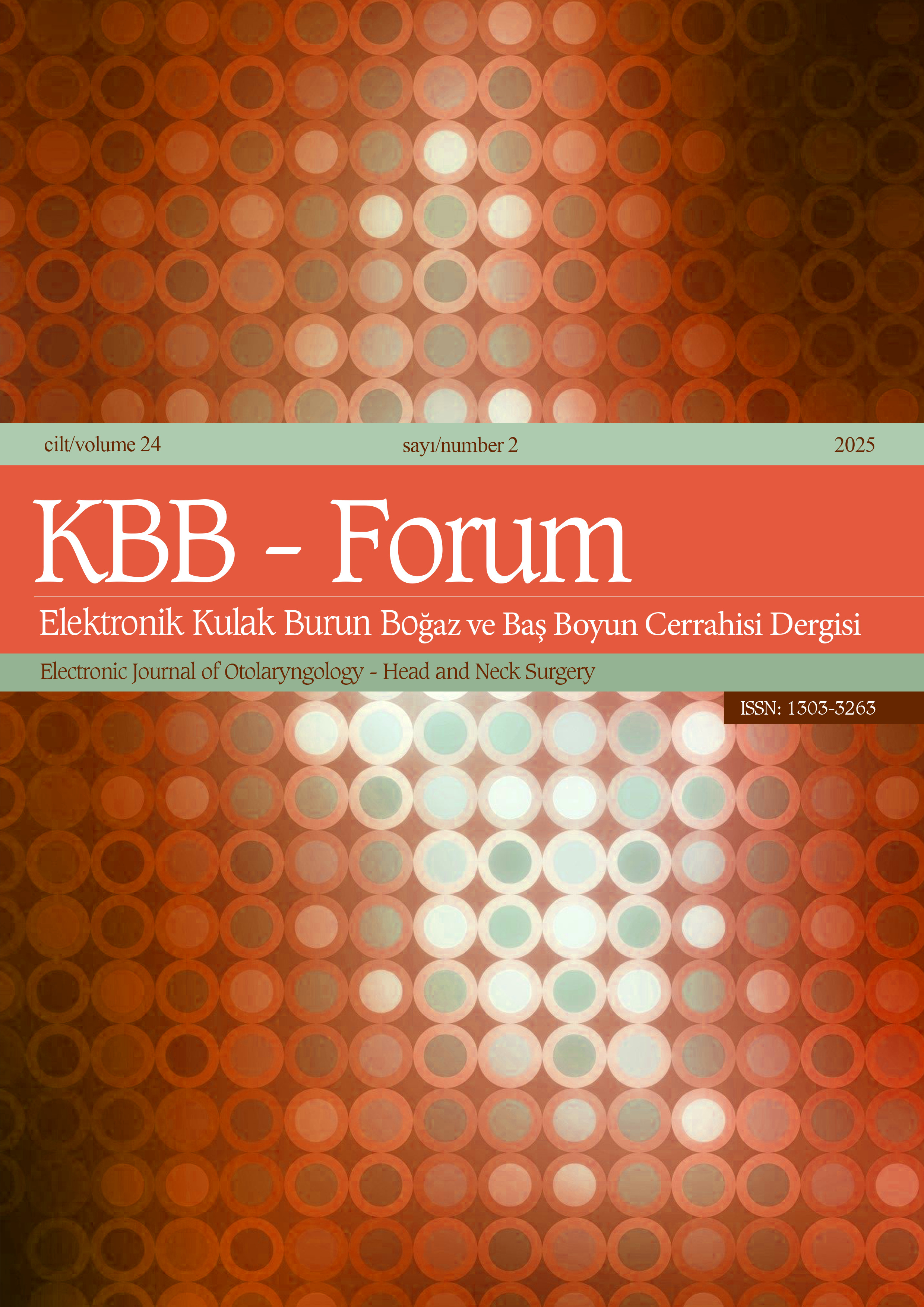ACOUSTIC REFLEX LATENCY TEST FINDINGS IN YOUNG ADULTS WITH NORMAL HEARING
1Sağlık Bilimleri Üniversitesi, Hamidiye Sağlık Bilimleri Fakültesi, Odyoloji Bölümü, İstanbul, Türkiye Objectives: Acoustic reflex latency (ARL) is the time between the onset of an auditory stimulus and the onset of contraction of the middle ear muscles. The aim of this study was to evaluate ARL in young adults with normal hearing.Materials and Methods: The study included 50 females (mean: 23.69±2.69 years) and 50 males (mean: 23.56±2.69 years) aged 18-30 years with normal hearing, bilateral Type A tympanograms and bilateral acoustic reflex responses at 500, 1000, 2000 and 4000 Hz. Pure tone audiometry, tympanometric examination, acoustic reflex evaluation and acoustic reflex latency test (ARLT) were performed in all participants. The ARLT findings were compared between the ears and the frequencies evaluated.
Results: When ARLT parameters were compared between ears, no statistically significant difference was found at all frequencies (p>0.05). When onset latency and late latency parameters were compared between frequencies, statistically significant differences were found in all comparisons (p<0.001). No statistically significant difference was found in the baseline and late latency values in the comparisons between genders (p>0.05).
Conclusion: According to our findings, as the frequency increases, ARL onset latency and late latency become longer. While data for all ARLT parameters were obtained at 500, 1000 and 2000 Hz, ARLT parameters at 4000 Hz could not be obtained in some participants, which was thought to indicate that the probability of obtaining ARL at 4000 Hz was lower. Our study results can be used as normative data in future studies on ARL.
Keywords : Acoustic reflex, middle ear, tympanometry



